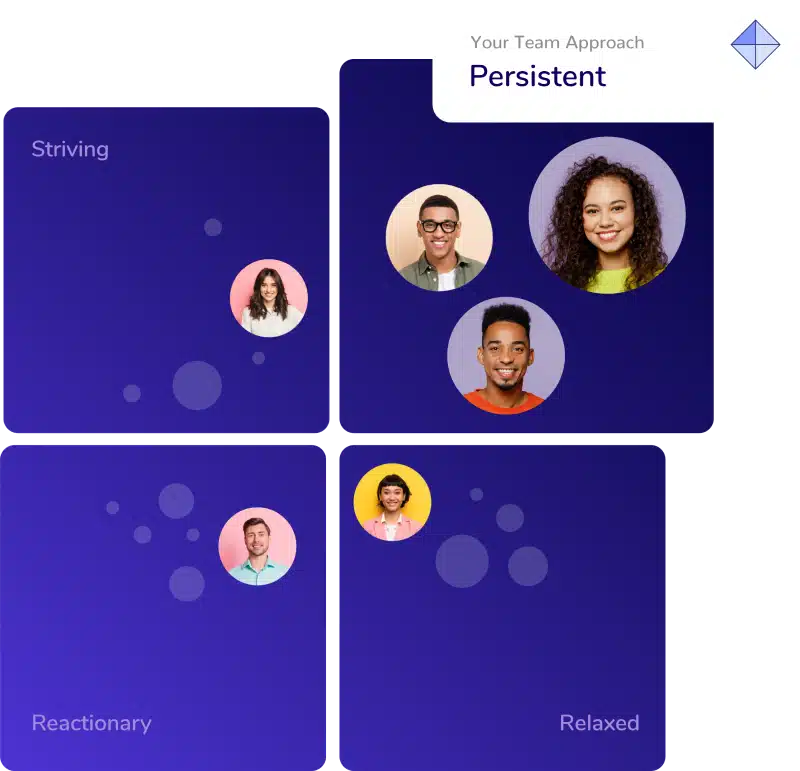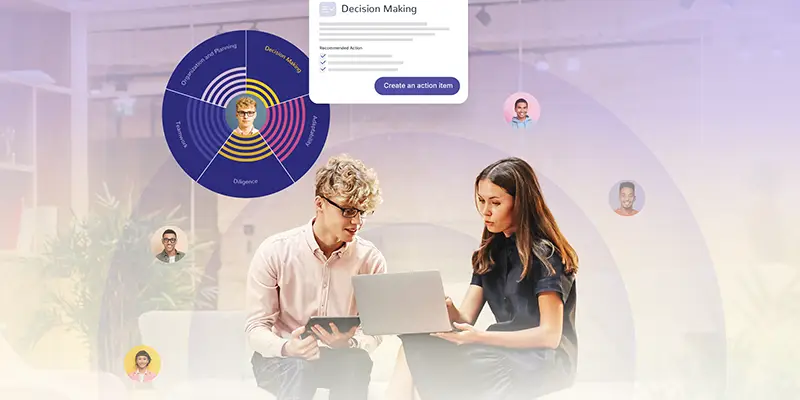
Explore 5 real-world insights on team effectiveness—and learn how research-backed principles can help you build stronger, more aligned teams.
Too often, we judge team success by the outcomes: Did they hit their numbers? Ship the product? Retain their people? But as every HR and talent leader knows, performance on paper doesn’t tell the whole story. Sometimes, the difference between a thriving team and one that struggles comes down to what’s happening beneath the surface—how people collaborate, communicate, and respond to challenge and change.
In a recent Wonderlic Talent Talk with our industrial-organizational psychologist and customer success leader, we unpacked what truly drives team effectiveness. Backed by decades of research and grounded in real-world team dynamics, these insights offer a fresh perspective on how to build high-performing teams—not just through talent, but through structure, clarity, and trust.
We explore five powerful moments from that discussion, each tied to a common challenge and actionable insight.
Here's what we'll cover:
Teams Deliver Results—Not Just People
“Work happens in individuals, but results really happen in teams. Our promises to employees and customers are fulfilled when people work together.”
— Tonya Lucas, Industrial Organizational Psychology Consultant III
Even the most talented employees can’t drive lasting business results on their own. Team-level outcomes require shared understanding, aligned goals, and trust. When people collaborate effectively, they create more than the sum of their parts.
Research shows that affect, behavior, and cognition—how people feel, act, and think in a team setting—are key to translating individual contributions into organizational results. These underlying dynamics often go unnoticed, but they’re foundational to team effectiveness.
HR leaders should consider how their organizations enable this kind of collaboration. That starts by measuring team-level dynamics and offering guidance that connects individual strengths to shared goals.
Learn more about the new Team Dynamics tool inside of Wonderlic Develop.
Star Performers Aren't Enough
“We used to think success came from star performers. But today, we know it’s the team—the structure, collaboration, and dynamics—that truly drive outcomes.”
— Tonya Lucas, Industrial Organizational Psychology Consultant III
Hiring a high performer is great. But putting them on a poorly structured team? That’s a recipe for frustration—and lost potential. The reality is, teams thrive when they’re built intentionally, with complementary traits, balanced communication styles, and clarity around roles.
This is where tools like talent assessments can play a critical role. They help reveal who your team members are beyond the resume—their values, preferences, and working styles. When combined with team-level insights, these tools help HR leaders design teams that click, not clash.
Want to dive deeper into the value of assessments? Explore Wonderlic Select to see how they help organizations make better hiring and team composition decisions.
Org Charts Don't Build Teams- Design Does
“Org charts used to define how work got done. Today, teams are flexible, cross-functional, and foundational to how organizations are built.”
— Tonya Lucas, Industrial Organizational Psychology Consultant III
Static team structures are out. Today’s work happens across silos, geographies, and job functions. The best organizations have embraced flexible team design—the ability to form and reform groups around evolving goals.
That means HR needs visibility into more than who reports to whom. You need to understand how teams actually function: who collaborates, where friction lives, and how structure impacts speed.
Learn more about Wonderlic Team Dynamics and how it supports modern team design with real-time insight into team alignment and adaptability.
Speed Comes From Alignment
“To move fast, you have to collaborate—not just in your team, but across product, marketing, and leadership. That alignment is the new baseline.”
— Darren Phan, Associate Director of Customer Success
Speed isn't about pushing harder—it's about moving in sync. When team members share a common understanding of goals, roles, and priorities, decisions happen faster and execution becomes smoother.
This concept, known as shared mental models, is a hallmark of high-performing teams. And in cross-functional settings, alignment becomes even more critical.
HR and talent leaders can help foster this alignment by establishing common language, reinforcing team-level KPIs, and providing tools for structured goal-setting.
Team Culture Can't Be Ignored
“Even one resistant voice or a toxic clique can slow down an entire team. You have to understand your team’s dynamics before you can improve them.”
— Darren Phan, Associate Director of Customer Success
Culture is more than perks and values. It’s how your team behaves when no one is watching. And sometimes, what you don’t see is what holds people back—unspoken tensions, unclear roles, or low psychological safety.
HR leaders can’t solve what they can’t see. That’s why it’s essential to surface hidden dynamics and give managers the tools to lead more effectively.
Read more about psychological safety and how it shapes everything from innovation to retention.

Watch the Full Talent Talk
Ready to Build a Stronger Team?
High-performing teams aren’t built on luck. They’re built on clarity, collaboration, and insight. If you want to improve team effectiveness in your organization, it starts with understanding what’s really happening beneath the surface—and giving your people the tools to work better together.
Discover how Wonderlic Develop helps teams unlock their potential.
FAQ: Team Effectiveness
What is team effectiveness? Team effectiveness refers to how well a team achieves its objectives, maintains productive relationships, and adapts to changing demands. It’s influenced by structure, communication, trust, and shared goals.
How can talent assessments improve team performance?
Talent assessments help HR leaders understand how individuals will work together—uncovering traits like communication style, adaptability, and collaboration preferences.
What role does psychological safety play in team success?
Psychological safety encourages people to speak up, share feedback, and challenge ideas without fear. It’s linked to innovation, retention, and stronger team learning.
How do shared mental models support high-performing teams?
When teams have shared mental models, everyone is aligned on goals, roles, and strategies. This reduces miscommunication and accelerates decision-making.
Weekly insights to hire smarter






